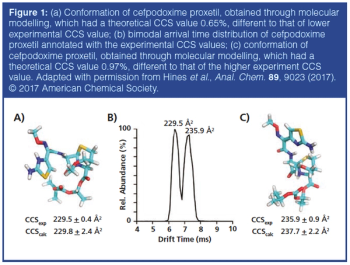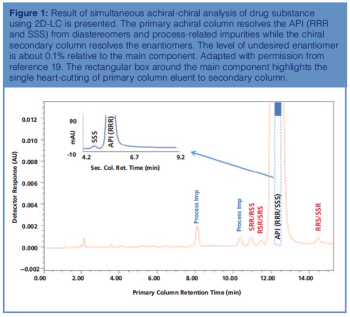
Special Issues
Click the title above to open the LCGC Europe October 2018 Supplement: Advances in Pharmaceutical Analysis in an interactive PDF format.

Special Issues
Click the title above to open the LCGC Europe October 2018 Supplement: Advances in Pharmaceutical Analysis in an interactive PDF format.

Special Issues
An introduction from the guest editors of this special supplement from LCGC Europe focusing on recent trends in pharmaceutical analysis.

Special Issues
This study demonstrates a new LEAN approach and method, where 25 solvents can be simultaneously determined based on predetermined relative response factors (RRFs) against an internal standard (decane) with only one injection of sample solution.

Special Issues
This article reviews the changing role of mass spectrometry (MS) hyphenated to reversed-phase liquid chromatography (LC) and alternative separation techniques in late-stage pharmaceutical development. The impact of the changing portfolios within the pharmaceutical industry is discussed as the industry moves from a traditional small-molecule model to a more diverse portfolio. A new generation of high‑resolution mass spectrometers and ion mobility mass spectrometers operating as orthogonal separation techniques has greatly increased the ability to resolve impurities and increase the level of knowledge gained from a single experiment. The continued impact and innovation of gas chromatographyÐmass spectrometry (GCÐMS) in late-stage development is also discussed.

Special Issues
The evolution of two-dimensional liquid chromatography (2D-LC) instruments along with improved software capabilities has transferred 2D-LC from the hands of experienced researchers to functioning analytical laboratories in the pharmaceutical industry. 2D-LC offers chromatographers novel solutions to problems ranging from analyzing complex samples requiring excessively large peak capacities to separating simple compounds that are difficult to resolve. Recent developments in 2D-LC and 2D-LC–MS have demonstrated the potential of this technique in practice and 2D-LC is set to become an essential tool in the pharmaceutical sector to address problems ranging from coelution, peak purity assessment, simultaneous achiral-chiral analysis, genotoxic impurities, and more.

Special Issues
Supercritical fluid chromatography (SFC) is a well-established analytical technique used in the pharmaceutical industry for decades. However, it is still considered a new technique in some areas, for example, implementing the technique for purity profiling in late-stage development and production. In pharmaceutical analytical departments, SFC serves a wide variety of purposes, including compound purification, purity profile, and chiral analysis. Depending on the phase of drug development, the analytical performance requirements, such as speed of analysis, efficiency, and sensitivity, may vary considerably. The end goal is to provide robust, reliable and transferable analytical SFC methods. The challenges for future development and widespread implementation of SFC and the implementation of SFC in quality control (QC) laboratories using modern instrumentation are also discussed.